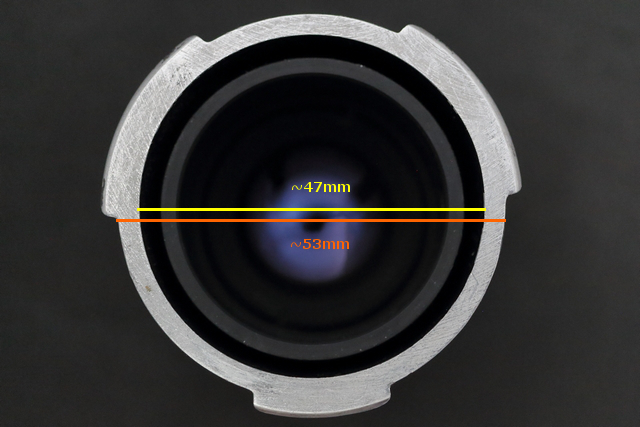Meyer-Optik Görlitz Diaplan 80mm f2.8


The Lens details of a series of images taken by Steve Cushing on mirrorless camera.
Fitting has no mount and has a 42mm Flange Distance - this lens will fit and achieve focus to infinity mirrorless cameras even on DSLRs.

Lens History
The Meyer Optik Diaplan 80mm f2.8 is projection lens for 35mm Slide Projector. If you like bubbles for Bokeh you want this lens. Its optical design is Cooke Triplet and the Bokeh similar to the Trioplan 100mm f2.8, but with smaller bubbles.
Founded in 1896, the Görlitz-based company offered lenses at a very early stage and to continued to do so even in a divided Germany for many years. The company worked with with Dr. Paul Rudolph, who had previously been involved in some of Carl Zeiss Jena's most important lens developments (Protar, Planar, Tessar). Together with Dr. Rudolph, the famous Plasmat lenses were developed and the Kino-Plasmat was the world's fastest lens at the time. Another important step was the delivery of OEM-lenses for camera manufacturers - such as the Exakta from Ihagee. In the 1930s Meyer-Optik already had a wide range of high-quality interchangeable lenses. Compared to Carl Zeiss Jena, who was a market leader at the time, the lenses were usually offered at a slightly lower price.
By the integration of the Meyer-Optik into the combine VEB Pentacon, the imprint Meyer optics on the lenses disappeared after 1971. In the mid-1980s, the combine VEB Carl Zeiss Jena took over the VEB Pentacon and thus also Meyer-Optik. As a result of this centralisation, Meyer-Optik increasingly lost technical competence and some products were discontinued in favour of competing models from Carl Zeiss Jena. In addition, many machines necessary for the production of high-quality lenses could not be procured from other socialist states or from Western countries until 1989.
This is the first version of this lens in all metal from before they became part of Pentacon. The later Pentacon AV has a plastic barrel and is also reviewed on this site with sample images.
If you are using any trioplan it is for the artistic effect as this lens design is not pixel perfect, indeed sometimes even the focus peaking does not work on my camera when I use a Cooke triplet lens as the image is not short enough. But who cares, this is an Art lens.
No filter mount, no aperture and no helicoid. It was used in 35mm slide projectors with 42,5mm mount. Its optical design is Cooke Triplet and the Bokeh similar to the Trioplan 100mm f2.8, but with smaller bubbles. If you want big bubbles get the Pentacon AV 100. I prefer the smaller focal length of this one, but have both.
The bubble bokeh is better than the later plastic Pentacon version which is also on this site.
Lens In Use
- Optical design: 3 glass elements in 3 Groups (Cooke Triplet) made by the same company as the expensive Meyer-Optik Görlitz Trioplan 100 mm f/ 2.8.
- No filter mount.
- No aperture - but who wants one when you want the bubbles. Any aperture will change the shape and clarity of these so wide open is the only way to shoot with a Cooke Triplet!
- No helicoid.
Summary
I can't create creative images like this even with my expensive native super-sharp canon RF lenses.
Rarely is learning so much fun!
For images using this lens click HERE
For general information on lens design and lens elements go to the homepage HERE